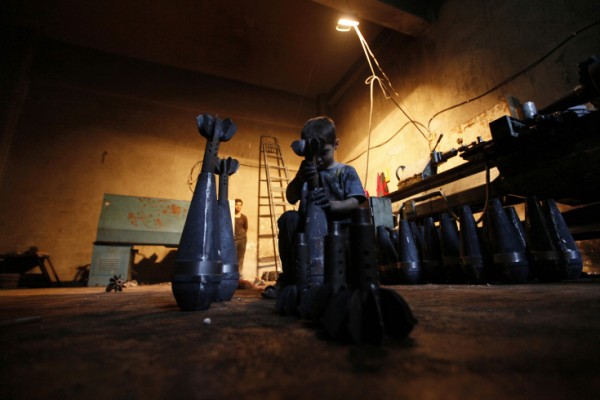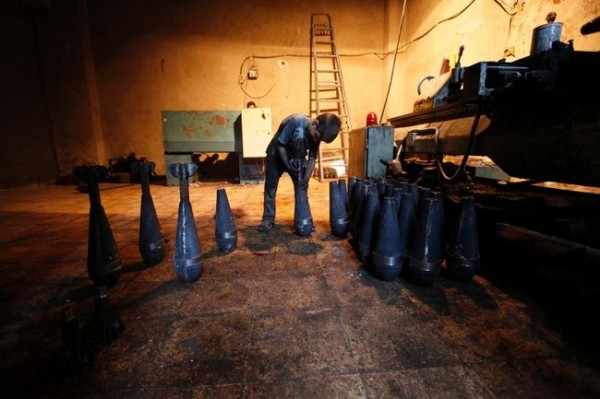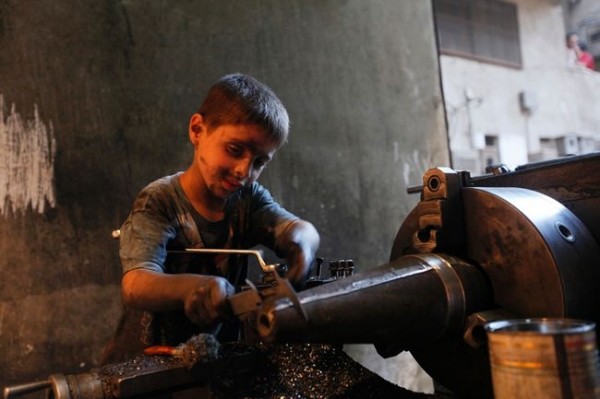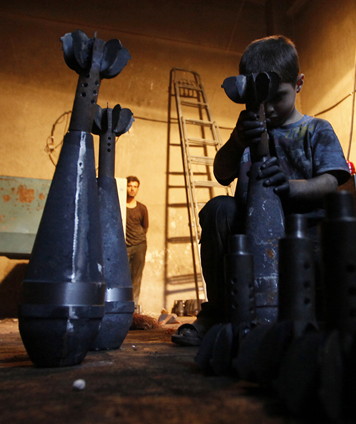Notes
The Munitions Factory
Update: March 19, 2014. This Reuters photo essay is now the subject of allegations that the photos were staged. See this story at NPPA that was published today. If that turns out to be the case, our impressions above — that the different scenes of the child are inconsistent, manipulative and take advantage would make that much more sense. We will be following up on the story and the photos shortly in a new post.
My question is, why did this photo stand out so powerfully from the larger edit of 10-year-old Issa working in a Syrian rebel weapons factory?
Images from the Reuters photo package were widely distributed this week. (For an overview, the Toronto Sun published these fifteen.) Most all the pictures portray innocence lost as well as the exploitation of child labor. Some (specifically #11 and #15) capture a boy looking terrifically lonely and vulnerable. Others are disturbing for how much older and skilled Issa appears as a munitions hand.
With the father apparently working in the background (here’s the jumbo size), this version at least seems “a little less Lewis Hine.” In contrast, the symbolic license in that top photo is more troubling (and yes, the one I would have chosen, too, if I was constructing a gallery of the Pictures of the Week). But why specifically?
One reason has to do with Issa’s relation to the munitions.
As opposed to this scene from the edit in which Issa is clearly recognizable as a work hand, his face having a more mature cast to it, the photo at the top of the post is not nearly so delineated. Plays with our hearts and our minds, the shadow creates an ambiguity in which Issa half-looks like a toddler playing with toys.
The other element which plays on us involves the father observing from afar. His looking on like that naturally raises the question of guardianship and the morality of Issa’s “employment.” It goes beyond just him, however. Framing the onlooker as witness can’t help but catch us up in that same role. At the exact moment the President has initiated a furious debate over our moral responsibility to the Syrians after the chemical attacks, this image takes full advantage.
(photos: Hamid Khatib/Reuters. caption: Issa, 10, assembles a locally handmade mortar shell in a weapons factory of the Free Syrian Army in Aleppo on September 7, 2013. Issa works with his father in the factory for 10 hours every day except on Fridays.)






Reactions
Comments Powered by Disqus